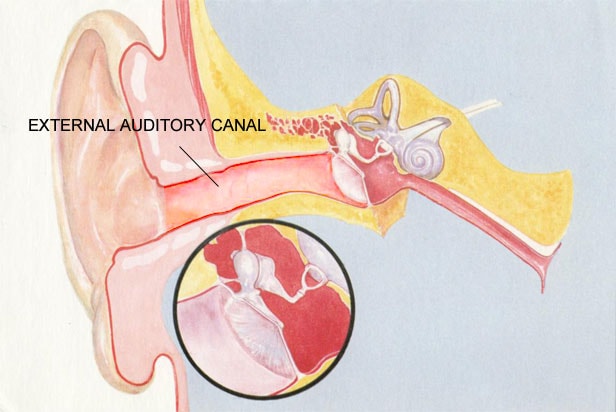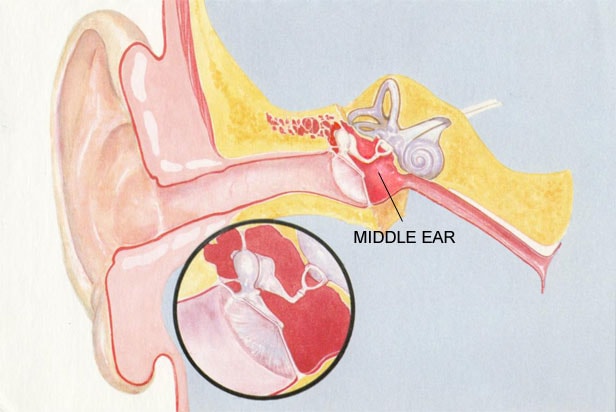Ear Pain Otalgia
Ear Pain (Otalgia)
The most common cause of ear pain is infection either of the external canal (otitis externa, furunculosis) or middle ear (otitis media). The nerves which provide sensation to the mouth, nose and throat also supply the ear and the jaw (temporomandibular) joint. Pain may therefore also be referred from strain of the jaw joint with spasm of the adjacent chewing muscles, or conditions affecting other ENT sites.


Diagnostics
Microscopy
Why?
Microscopy means carrying out a detailed examination of the external canal and ear drum using an operating microscope for magnification. The normal eardrum is only about 1 cm in diameter, so enlarging this by x4 or higher results in more accurate diagnostic information.
How?
Typically the examination chair is reclined so that the patient’s head can be stabilised on the headrest to prevent even minor movements, which could cause discomfort. A single-use sterile plastic speculum is introduced into the earhole and the overhead microscope swung into position. It is a painless short procedure.
Microsuction
Why?
Accumulated wax is often present in a normal ear canal. It can prevent proper inspection of the skin lining the canal or ear drum, and its presence can interfere with diagnostic testing. Excessive wax blocking an ear canal can cause hearing loss and therefore affect the results of pure tone audiometry or interfere with the free passage of water during the caloric test. Flakes of wax may also block the small soft rubber ear probes used with tympanometry, Eustachian tube function and Otoacoustic emission testing.
How?
Typically wax is removed by inserting a small suction device through a sterile plastic speculum using the microscope, a procedure termed microsuction. This is normally a painless procedure. Syringing the ear canals with clean warm water has been a traditional method for removing wax, but requires special care or this procedure may result in permanent damage to the ear. ENT surgeons are reluctant to recommend syringing because there may be underlying problems obscured by the wax, such as a perforated or weak ear drum, which significantly increases the risk of causing permanent damage or infection.
Ear Swab For Microscopy And Culture
Why?
Infections caused by bacteria or fungi require antimicrobial treatment, which varies depending on the specific infective organism. Acute infections result in the production of pus, which is commonly thick yellow-green in colour and may have an unpleasant smell. When an infection is seen or suspected, a sample is therefore sent for laboratory analysis.
How?
After inserting a sterile plastic speculum into the ear hole, a fine sterile cotton bud probe is immersed in the pus and immediately stored in preservative for transfer to the laboratory. Examination under the microscope (microscopy) by the Microbiologist enables the type of infective organism to be diagnosed. Subsequently, growing the organism on a special gel (culture) and applying various drugs allows the specific antimicrobial agent required to kill the organisms causing the infection to be determined.
Pure Tone Audiometry
Why?
This is a basic subjective hearing test to determine your ability to hear various sounds at different tone frequencies.
How?
You will be required to sit in a soundproof booth with headphones and press a button every time you hear a bleep sound, even if it is very faint. You should ignore any rushing sounds used to mask the opposite ear and only react to the bleeps. This test may take up to 20 minutes depending on the results.
Tympanometry
Why?
This is an objective test of your middle ear function and is useful for determining whether:
- there is any fluid or congestion in your middle ear
- there is a perforation (hole) in your ear drum
- the ear drum is flaccid and weak
- there is loss of continuity of the ossicles (middle ear bones) by disease or trauma
- a grommet is blocked
- changing pressure in the ear canal causes dizziness indicating a fistula (defect) in the bone surrounding the labyrinth (balance organ)
How?
You are not required to do anything for this test other than sit very still. The audiologist will hold a soft rubber probe at the entrance of your ear canal and you may feel a slight change of pressure in your ear.
Book Appointment







